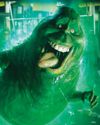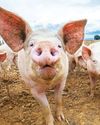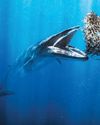
Taking place between 6 and 11 June, the Cheltenham Science Festival is one of the biggest celebrations of STEM (science, technology, engineering and maths) subjects in the UK. This year, The Week Junior Science+Nature has created 10 boards that will be scattered around the festival site for you to find, taking you on a journey through the solar system. All you have to do is find the boards and turn to page 43 in this magazine to answer the questions. Don't worry if you're not going to the festival - you can still play along. Here's a round-up of all the planets (and one star) on the boards. To find out more about Cheltenham Science Festival go to cheltenhamfestivals.com/science
CHELTENHAM
Science Festival
The Sun
A near-perfect sphere of gas, the Sun is the beating heart of our solar system. The Sun is so big that it contains 99.86% of the solar system's entire mass.
As the closest star to Earth, it is the solar system's largest and hottest object. The Sun's core reaches temperatures of 15 million C, which makes its surface temperature of 5,973°C seem almost chilly in comparison.
Mercury
Mercury is the closest planet to the Sun. That means if you were to stand on its surface, the Sun would appear three times larger and seven times brighter than it does on Earth. However, despite surface temperatures of more than 400°C, Mercury is not the solar system's hottest planet. This is because it has no atmosphere to hold onto the heat, and temperatures plunge as low as - 180°C at night. The smallest planet in the solar system, Mercury has no rings and no Moons.
Venus
Denne historien er fra Issue 62-utgaven av The Week Junior Science+Nature UK.
Start din 7-dagers gratis prøveperiode på Magzter GOLD for å få tilgang til tusenvis av utvalgte premiumhistorier og 9000+ magasiner og aviser.
Allerede abonnent ? Logg på
Denne historien er fra Issue 62-utgaven av The Week Junior Science+Nature UK.
Start din 7-dagers gratis prøveperiode på Magzter GOLD for å få tilgang til tusenvis av utvalgte premiumhistorier og 9000+ magasiner og aviser.
Allerede abonnent? Logg på

Camera Obscura
Imagine stepping inside a dark room, where the only source of light comes through one small hole in the wall.

MANCHESTER SCIENCE FESTIVAL
From 18-27 October, shoppers at the Arndale shopping centre in Manchester, England, will face a giant spider.

Should musicians stop touring?
Multiple concerts travelling around the world have a big impact on the environment.

Are ghosts real?
Plenty of people believe in ghosts, but it's hard to find proof.

SMASH STEREOTYPES
In an extract from his prize-winning book, scientist and writer Adam Rutherford shows you how to use the power of science to fight racism. This chapter, titled Myth-Busting, is all about sport.

Animal awareness
What would it feel like to be another animal?

Hamza Yassin
Go behind the camera with a wildlife filmmaker.

WILDLIFE WATCH
Ben Hoare goes on a safari from his sofa to discover how nature documentaries are made.

Big bum breakthrough
A team of researchers who found out that mammals can breathe through their bottoms have won a prize at the lg Nobel awards.

A jaw-dropping undersea snap
A photograph of a Bryde's whale feeding on a heart-shaped \"bait ball\" of sardines has won the Ocean Photographer of the Year contest.